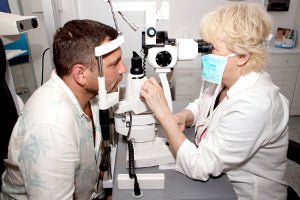
Improving Patient Satisfaction at your Ophthalmology Practice
How satisfied are patients of your ophthalmology practice? The answer to this question is an important one, and will continue to be so in the coming years. Despite what we know about expected increases in the number of ophthalmology patients, ophthalmologists won't be able to benefit from this influx without continuing to improve patient satisfaction. Why? Patient satisfaction plays a significant role in the success of healthcare practices, even when demand for services is high; in fact, word-of-mouth remains the primary way individuals choose a healthcare professional. Additionally, according to Forbes.com, an increasing number of businesses and insurance companies are interested in metrics concerning patient satisfaction, with some even proposing that a percentage of physician pay be based on patient satisfaction scores. While these aren't widely-implemented ideas as of yet, they do underscore the continued importance of patient satisfaction.
So how can your ophthalmology practice find simple ways to better satisfy patients?
 Today's patient is arguably more concerned with their health than ever before, and with easy access to an abundance of information on eye health and specific eye procedures, expect patients to attend consultations with more detailed and informed questions. While some procedures may be urgent, and therefore leave patients little time to "shop around" for the best ophthalmologist, common procedures like corrective lens surgery and cataract removal afford patients the time to conduct research and attend multiple consultations.
Today's patient is arguably more concerned with their health than ever before, and with easy access to an abundance of information on eye health and specific eye procedures, expect patients to attend consultations with more detailed and informed questions. While some procedures may be urgent, and therefore leave patients little time to "shop around" for the best ophthalmologist, common procedures like corrective lens surgery and cataract removal afford patients the time to conduct research and attend multiple consultations.
What will set your consultation apart from others is demonstrating your breadth of knowledge in a way that's clear and easy-to-understand, discussing alternative treatments, and being honest if you feel a procedure is not the best course of action for a patient.
Leverage Advanced Technologies and Instruments
Equipping your practice with advanced technologies and high-quality microsurgery instruments like vitreoretinal scissors and eye forceps can result in higher patient satisfaction for two reasons. First, better technologies and instruments reduce the chance of error during a patient's procedure; second, these cutting-edge technologies and tools often make procedures more expedient. This allows ophthalmologists to treat patients faster (increasing their satisfaction), and in turn see more patients (reducing patient wait times).
While this may seem an obvious word of advice, there are ways to better communicate your sincerity to patients. Patient satisfaction is not just about the end result of a procedure; it's about how a patient feels while in your office, and it can sometimes be difficult for ophthalmologists to maintain a consistent level of courteousness and cheerfulness given the fast-paced nature of the job. To avoid coming off as brusque or indifferent to patients—even though you may just be tired or stressed—take care to:
- - Address patients by name.
- - Make strong eye contact and greet patients with a handshake.
- - Ask if patients have any questions.
- - Offer to supply patients with additional resources.
- - Listen. Refrain from interrupting patients when they're expressing questions or concerns.
- - Always end an appointment with a friendly farewell.
